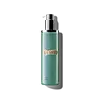What's inside
What's inside
 Key Ingredients
Key Ingredients

 Benefits
Benefits

 Concerns
Concerns

 Ingredients Side-by-side
Ingredients Side-by-side

Caprylic/Capric Triglyceride
MaskingPolysorbate 85
EmulsifyingIsononyl Isononanoate
EmollientSqualane
EmollientC12-15 Alkyl Benzoate
AntimicrobialSorbitan Trioleate
EmulsifyingAlgae Extract
EmollientSesamum Indicum Seed Oil
EmollientMedicago Sativa Seed Powder
Skin ConditioningHelianthus Annuus Seedcake
AbrasivePrunus Amygdalus Dulcis Seed Meal
AbrasiveEucalyptus Globulus Leaf Oil
PerfumingSodium Gluconate
Skin ConditioningCopper Gluconate
Skin ConditioningCalcium Gluconate
HumectantMagnesium Gluconate
Skin ConditioningZinc Gluconate
Skin ConditioningTocopheryl Succinate
AntioxidantNiacin
SmoothingSesamum Indicum Seed Powder
Skin ConditioningLaminaria Digitata Extract
Skin ProtectingCrithmum Maritimum Extract
Skin ConditioningChlorella Vulgaris Extract
Skin ConditioningVitis Vinifera Seed Oil
EmollientMaris Sal
Skin ConditioningPearl Powder
Plankton Extract
Skin ConditioningTocopheryl Acetate
AntioxidantTourmaline
Glycerin
HumectantNeopentyl Glycol Dicaprate
EmollientSilica
AbrasiveIsopropyl Palmitate
EmollientQuaternium-90 Bentonite
Propylene Carbonate
SolventParfum
MaskingBenzyl Salicylate
PerfumingLinalool
PerfumingButylphenyl Methylpropional
PerfumingBenzyl Benzoate
AntimicrobialLimonene
PerfumingAlpha-Isomethyl Ionone
PerfumingMica
Cosmetic ColorantCI 61565
Cosmetic ColorantCI 60725
Cosmetic ColorantCI 77891
Cosmetic ColorantCaprylic/Capric Triglyceride, Polysorbate 85, Isononyl Isononanoate, Squalane, C12-15 Alkyl Benzoate, Sorbitan Trioleate, Algae Extract, Sesamum Indicum Seed Oil, Medicago Sativa Seed Powder, Helianthus Annuus Seedcake, Prunus Amygdalus Dulcis Seed Meal, Eucalyptus Globulus Leaf Oil, Sodium Gluconate, Copper Gluconate, Calcium Gluconate, Magnesium Gluconate, Zinc Gluconate, Tocopheryl Succinate, Niacin, Sesamum Indicum Seed Powder, Laminaria Digitata Extract, Crithmum Maritimum Extract, Chlorella Vulgaris Extract, Vitis Vinifera Seed Oil, Maris Sal, Pearl Powder, Plankton Extract, Tocopheryl Acetate, Tourmaline, Glycerin, Neopentyl Glycol Dicaprate, Silica, Isopropyl Palmitate, Quaternium-90 Bentonite, Propylene Carbonate, Parfum, Benzyl Salicylate, Linalool, Butylphenyl Methylpropional, Benzyl Benzoate, Limonene, Alpha-Isomethyl Ionone, Mica, CI 61565, CI 60725, CI 77891
Caprylic/Capric Triglyceride
MaskingPolyglyceryl-2 Caprate
EmulsifyingSqualane
EmollientHydrogenated Farnesene
EmollientPolyglyceryl-2 Sesquioleate
EmulsifyingTriethylhexanoin
MaskingCitrus Aurantium Dulcis Oil
MaskingLavandula Angustifolia Oil
MaskingRosa Moschata Seed Oil
EmollientAvena Sativa Kernel Oil
Skin ConditioningOenothera Biennis Oil
EmollientMoringa Oleifera Seed Oil
EmollientLavandula Hybrida Oil
EmollientRosmarinus Officinalis Leaf Extract
AntimicrobialAnthemis Nobilis Flower Oil
MaskingHelianthus Annuus Seed Oil
EmollientTocopherol
AntioxidantLimonene
PerfumingLinalool
PerfumingCaprylic/Capric Triglyceride, Polyglyceryl-2 Caprate, Squalane, Hydrogenated Farnesene, Polyglyceryl-2 Sesquioleate, Triethylhexanoin, Citrus Aurantium Dulcis Oil, Lavandula Angustifolia Oil, Rosa Moschata Seed Oil, Avena Sativa Kernel Oil, Oenothera Biennis Oil, Moringa Oleifera Seed Oil, Lavandula Hybrida Oil, Rosmarinus Officinalis Leaf Extract, Anthemis Nobilis Flower Oil, Helianthus Annuus Seed Oil, Tocopherol, Limonene, Linalool
 Reviews
Reviews

Ingredients Explained
These ingredients are found in both products.
Ingredients higher up in an ingredient list are typically present in a larger amount.
This ingredient is an emollient, solvent, and texture enhancer. It is considered a skin-softener by helping the skin prevent moisture loss.
It helps thicken a product's formula and makes it easier to spread by dissolving clumping compounds.
Caprylic Triglyceride is made by combining glycerin with coconut oil, forming a clear liquid.
While there is an assumption Caprylic Triglyceride can clog pores due to it being derived from coconut oil, there is no research supporting this.
Learn more about Caprylic/Capric TriglycerideLimonene is a fragrance that adds scent and taste to a formulation.
It's found in the peel oil of citrus fruits and other plants such as lavender and eucalyptus. The scent of limonene is generally described as "sweet citrus".
Limonene acts as an antioxidant, meaning it helps neutralize free radicals.
When exposed to air, oxidized limonene may sensitize the skin. Because of this, limonene is often avoided by people with sensitive skin.
The term 'fragrance' is not regulated in many countries. In many cases, it is up to the brand to define this term. For instance, many brands choose to label themselves as "fragrance-free" because they are not using synthetic fragrances. However, their products may still contain ingredients such as essential oils that are considered a fragrance.
Learn more about LimoneneLinalool is a fragrance and helps add scent to products. It's derived from common plants such as cinnamon, mint, citrus, and lavender.
Like Limonene, this ingredient oxidizes when exposed to air. Oxidized linalool can cause allergies and skin sensitivity.
This ingredient has a scent that is floral, spicy tropical, and citrus-like.
Learn more about LinaloolSqualane is an emollient that helps the skin hold onto moisture. It's an oily liquid that occurs naturally in certain types of fish and plant oils.
Because squalane boosts hydration in the skin, it also comes with plenty of benefits: it is an antioxidant and can help fight free radicals and skin damage. Squalane is also found to have a detoxifying effect when applied.
Squalane comes from squalene, which occurs naturally within the sebum of our skin. It is one of the oils our skin produces to keep itself hydrated. Squalane is the hydrogenated version of squalene and has a longer shelf life.
Research shows that squalane is non-irritating (even at 100% concentration).
In general, it's a fantastic ingredient. It does a great job at hydrating the skin, and it's suitable for those with sensitive skin.
The source of squalane may impact malassezia / fungal acne. This is because olive oil derived squalane can contain impurities such as fatty acids and plant waxes. Sugarcane derived squalane is recommended for anyone with malassezia concerns.
Is squalane vegan?
This depends on the source. Squalane can be derived from both plants and animals. Most squalane used in skincare comes from plants.
Please note: the source of squalane is only known if disclosed by the brand. We recommend reaching out to the brand if you have any questions about their squalane.
Read more about squalene with an "e".
Is squalane an oil?
Squalane is often called an oil, but it’s technically not; it’s a hydrocarbon, meaning it’s only made of carbon and hydrogen, unlike true oils which are triglycerides made of fatty acids and glycerol.
The term “oil-free” isn’t regulated, so companies can define it however they want. Some exclude all oils, while others just avoid mineral oil or comedogenic oils.
While some people avoid oils thinking they cause breakouts, the right kind of oil (or oil-like ingredient like squalane) can actually help balance and hydrate your skin. It’s worth testing out simple oils or squalane to see what works best for your skin.
Learn more about Squalane